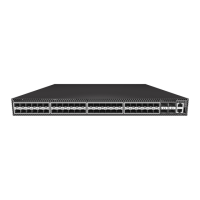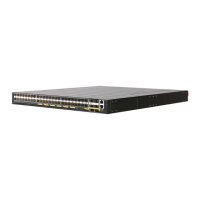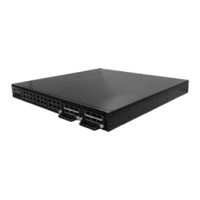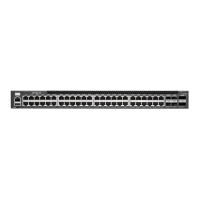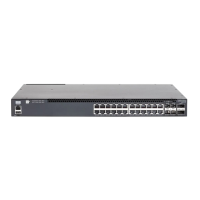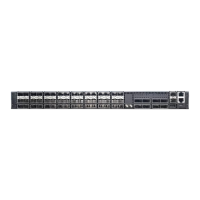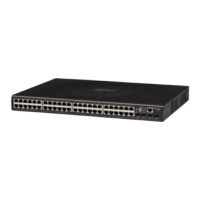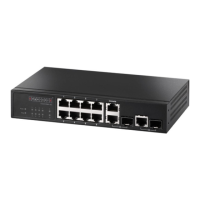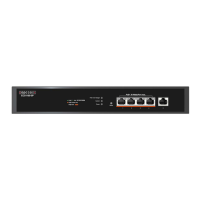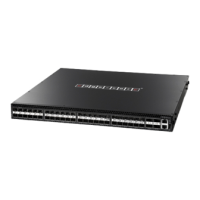Chapter 29
| IP Routing Commands
Border Gateway Protocol (BGPv4)
– 909 –
External BGP – eBGP interconnects different ASs through border routers, or eBGP
peers. These peering routers are commonly connected over a WAN link using a
single physical path. Alternatively, multiple eBGP peer connections may be used to
provide redundancy or load balancing. Distinct BGP sessions are used between
redundancy peers to ensure that if one session fails, another will take over.
BGP uses the AS path attribute to record the ASs that must be followed to reach the
prefix for a network aggregate. When a prefix is announced to an eBGP peer, the
local AS number is prepended to the AS path. This prevents routing loops by
rejecting any prefix announcements that include the local AS number in the AS
path. These announcements are also used by eBGP in the best path selection
process.
eBGP speakers, can communicate with other external peers or with iBGP peers. A
BGP speaker can determine if it communicating with an external or internal peer by
comparing the AS number sent in OPEN messages by a peer with that of its own
internal value. If it matches, then this neighbor is an iBGP speaker, and if it does not,
then it is an eBGP speaker. An eBGP speaker can advertise prefixes it has learned
from another eBGP speaker to a neighboring iBGP speaker; and it can also advertise
prefixes it has learned from an iBGP speaker to an eBGP speaker.
Internal BGP – In contrast to eBGP peers which have different AS numbers, iBGP
peers are configured with the same AS number. All iBGP peers within the same AS
should be connected to one another in a full-mesh connection (except when using
route reflection). When a prefix is announced from one iBGP peer to another, the AS
path is not changed. Since all iBGP peers are fully meshed, they will have the same
information in their BGP table, unless routing policies have been modified for some
of the peers.
When a iBGP peer receives a prefix announcement, it uses the best path selection
algorithm to see if the received announcement is the best path for that prefix. If it is,
the peer inserts this route into its routing table, and announces it to all of its peers,
both iBGP and eBGP. If it is not the best available path, the peer keeps a copy of it in
its routing table so that if path information for that prefix changes (such as if the
current best available path is withdrawn), it can be used to calculate a new best
available path.
BGP cannot detect routes and provide reachability information. To ensure that each
iBGP peer knows how to reach other, each peer must run some sort of Interior
Gateway Protocol (such as static routes, direct routes, RIP or OSPF) which provides
neighbor IP addresses. In order to avoid routing loops, an iBGP speaker cannot
advertise prefixes it has learned from one iGBP peer to another neighboring iBGP
peer.
BGP Routing Basics Both RIP and OSPF attach a metric, or cost, to each path. These protocols rely on
every router attaching the same meaning to each metric, allowing consistent
calculation of routes. However, after routing policies are put in place, routers may
value some metrics differently, invalidating the basic assumptions upon which RIP
and OSPF are based. This makes it unrealistic to run a distance-vector AS-level
protocol

